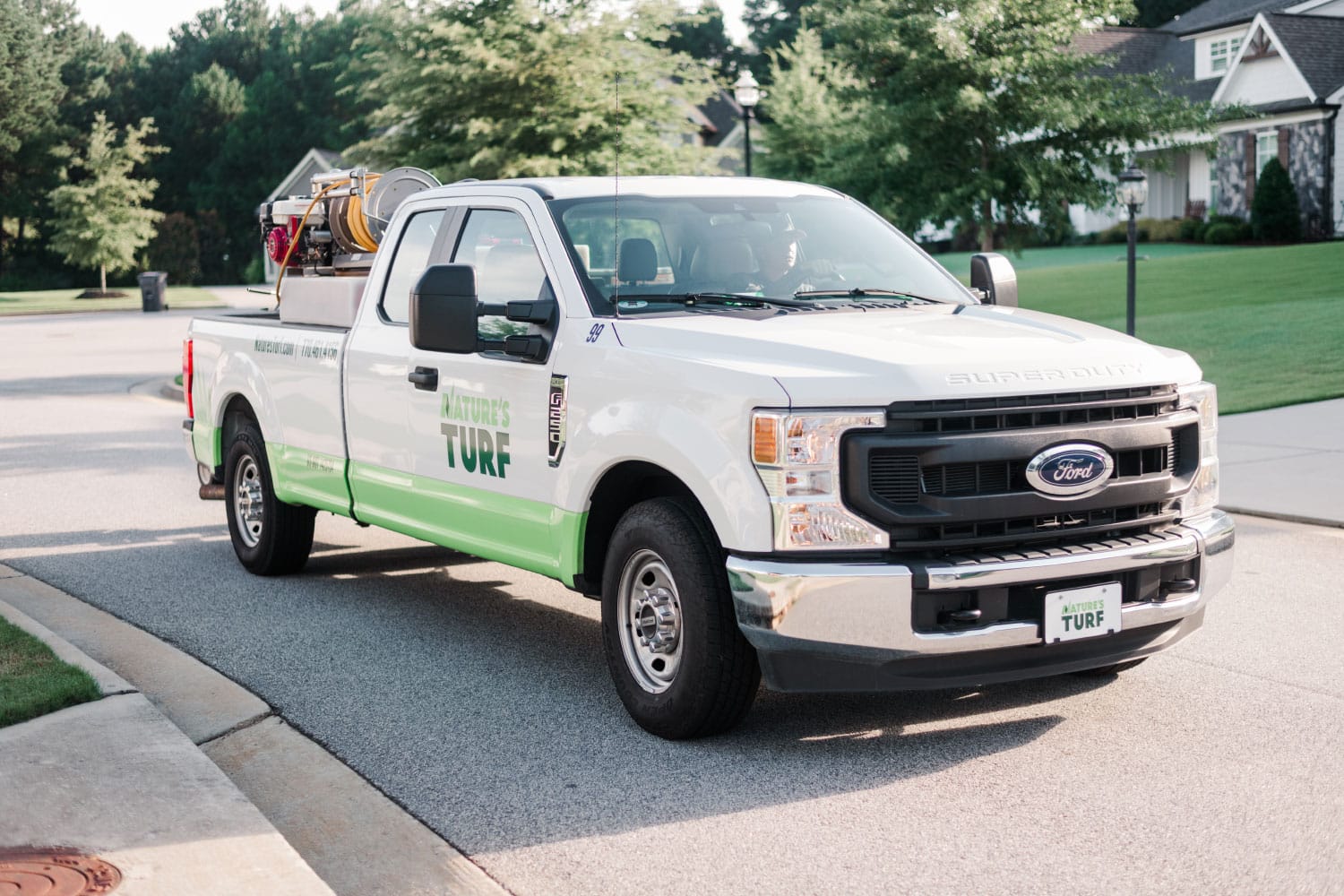Spring is approaching, and you’re looking forward to seeing your bermuda yard turn a beautiful, healthy-looking green–but tan spots are appearing in the grass instead. There are few things in turf more frustrating than tan spots showing up in your bermuda lawn after months of dormancy. There are a few causal factors for these unsightly inclusions, but a common culprit in our area is a fungal infection called Spring Dead Spot. Read on to learn about these annoying tan spots, how to prevent them, and how to get rid of Dead Spot once it appears.
What Is Spring Dead Spot?
Spring Dead Spot–those tan/brown places in your yard–are sunken patches of grass, generally between 4-18” in diameter, that appear in bermuda lawns in the spring. While symptoms may not appear until spring, the damage is actually done in the fall. As soil temperatures decrease, and growth for bermuda slows, a few species of Ophiosphaerella fungi go to work on the roots, rhizomes, and crowns of bermuda, creating rot and decay.
Bermuda is a warm-season turf that goes dormant during the winter, meaning it isn’t growing new roots, rhizomes, and shoots to counter the damage being created. When spring temperatures warm the soil, healthy roots and rhizomes begin creating new shoots and leaf growth. The dead roots and rhizomes, however, are incapable of new growth, leaving the characteristic sunken/tan patches we associate with Spring Dead Spot.
How Can I Prevent Spring Dead Spot?
Spring Dead Spot prevention is tricky business; generally, the best defense is to take all of the necessary measures to optimize the general health of your turf health. Here are our suggestions for how to optimize soil, root, and plant health:
- Mow your turf weekly to encourage lateral buds to create more stems. This means more density.
- Make sure the blades on your mower are sharp to limit mechanical injury to the grass and to allow the grass to create the tissues it needs for energy production and storage (instead of having to recover from injury).
- Water your turf well.
- Schedule annual aerations and limestone treatments to help limit the conditions favorable for fungal formation and spread.
- Perform soil tests and make the recommended amendments, which will also help ensure that your soil is well primed for bermuda root and rhizome production.
Caution: You can find fungal control products and programs labeled for use on Spring Dead Spot. Unfortunately, many of the active ingredients and modes of action considered most effective aren’t labeled for residential or commercial use. The label of any pest control product outlines the legal storage, application, and use sites for a product, and must be followed implicitly. That said, even products labeled for the control of Spring Dead Spot provide inconsistent results, often showing the best control where growing conditions and maintenance optimize turf health.
How Do I Get Rid of the Spots in My Yard?
Provide good maintenance, water well, and fertilize appropriately to encourage healthy, lateral growth. Bermudagrass has aggressive stolons, meaning they grow sideways at exceptional rates when growing conditions are good. Most Spring Dead Spot patches can be grown over in a single growing season.
Aeration and growth regulators can also be valuable tools in recovery from Spring Dead Spot. Growth regulators, while shortening the internodal length of stems, actually encourage lateral growth and bud expression. Aeration reduces compaction, allowing stolons to tack when spreading and rhizomes to move in from the sides underground.
Important Takeaways:
- Spring Dead Spot–those tan/brown places in your yard, are sunken patches of grass, generally between 4-18” in diameter, that appear in bermuda lawns in the spring.
- While symptoms may not appear until spring, the damage is actually done in the fall.
- Spring Dead Spot prevention is tricky business. Generally, the best defense against SDS is taking all of the necessary measures to optimize soil, root, and plant health.
- There are fungal control products and programs labeled for use on Spring Dead Spot. Unfortunately, many of the active ingredients and modes of action considered most effective aren’t labeled for residential or commercial use.
- Bermudagrass has aggressive stolons, meaning they grow sideways at exceptional rates when growing conditions are good. Most Spring Dead Spot patches can be grown over in a single growing season.
- If you have questions about how to prevent or get rid of Dead Spot, when and how to apply products to your lawn, or general questions about keeping your turf healthy and beautiful, give us a call at 678-831-6343 or email us at Nature’s Turf. We would love to partner with you to help you achieve a great lawn!








